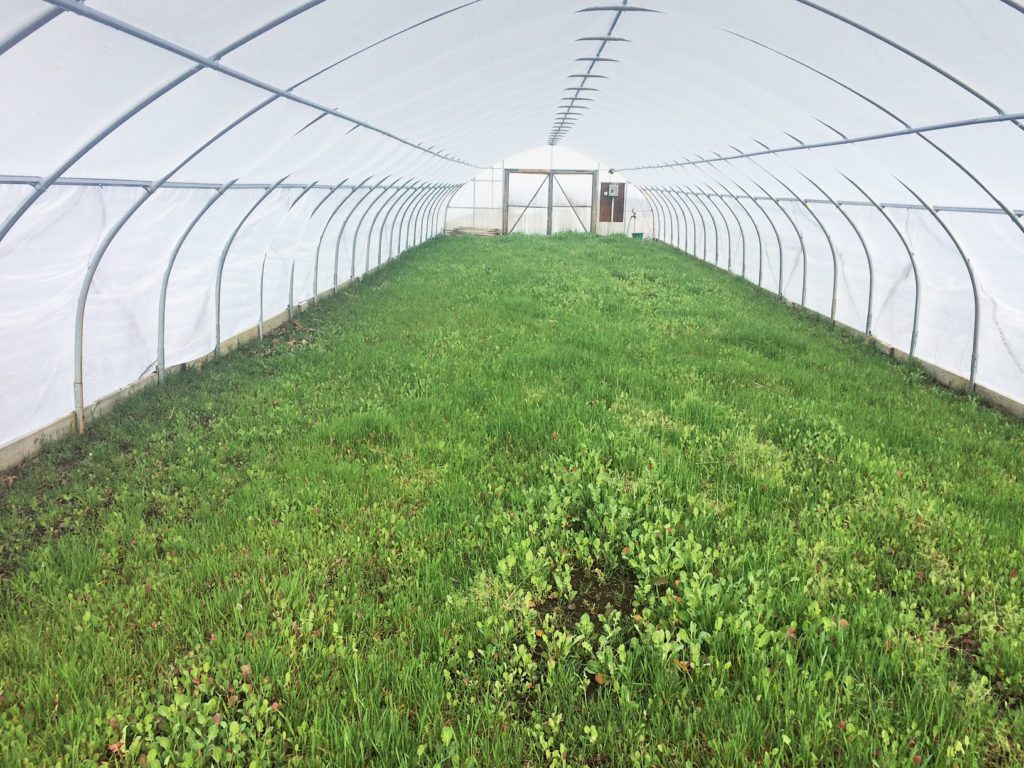Mar 14, 2017How to enhance soil health in a high tunnel
Woodstock Orchards in Windham County, Connecticut, is a diversified, 100-acre orchard and vegetable farm. In 2012, the farm’s owner, Doug Young, attended a soil health workshop where he watched, along with his farming colleagues, a rainfall simulation demonstration.
Doug looked on with particular interest at one of the soil samples used in the demonstration – it was from his conventionally tilled vegetable fields. During the demonstration, Doug saw runoff from his soil sample fill the jar with a dark brown liquid – indicating that his soil was not as healthy as it should be. He saw his soil was failing him, right before his eyes.
Doug and his son, Eric, decided it was time for a change.
Almost immediately after the workshop, Doug and Eric converted to no-till . And, with funding from NRCS’ Conservation Innovation Grant program, they obtained a no-till transplanter and roller/crimper to terminate their cover crops. They even took some fields out of production and used cover crops to help improve the health and function of the soil in those areas.
Through NRCS’ Environmental Quality Incentives Program, they installed a high tunnel and are using soil health practices to regenerate the soil inside it. Their high tunnel tomato-cropping scenario follows the principles of soil health and, says Doug, is producing higher-quality tomatoes than before.
Starter tomato plants are transplanted without tilling the soil by using a trowel tool and a little hand labor. The Young’s use a heavy straw mulch layer for weed suppression, compaction alleviation, and to conserve soil moisture. They also use a diversified cover crop to maximize species diversity in the system and let the plants do much of the work for them. After just a couple of years, soil organic matter, friability, and compaction have improved and their water infiltration rates are higher.
In the photo accompanying this article, you can see the results of soil health improvement through the use of a cover crop mix that includes winter cereal rye, triticale, daikon radish and hairy vetch. When I asked how he established the cover crop in a high tunnel, Eric laughed and said he hand broadcasted the seed, then set up a few sprinklers to minimize disturbance. Nature took care of the rest.
Now we host workshops on the Young’s farm and use their soil as the benchmark for healthy, functioning soil. What an impressive turnaround – all thanks to these dedicated conservation farmers who are unlocking the secrets in the soil.
– Raymond Covino, District Conservationist, USDA-NRCS















